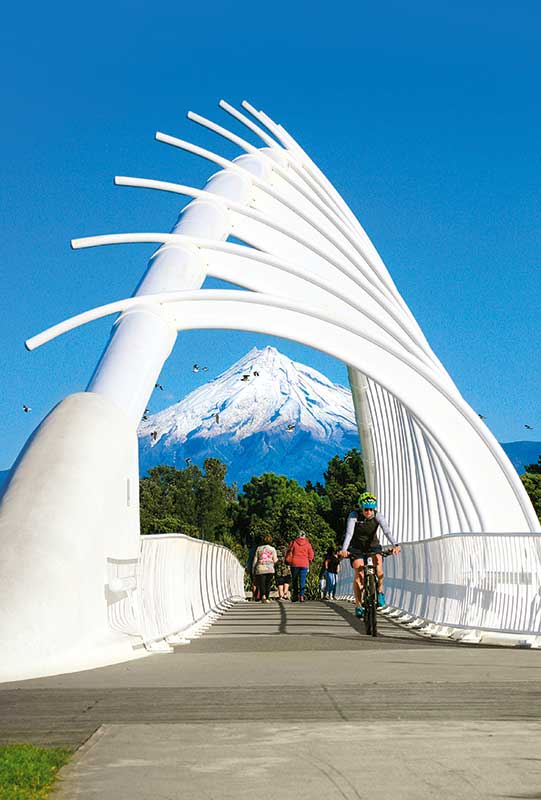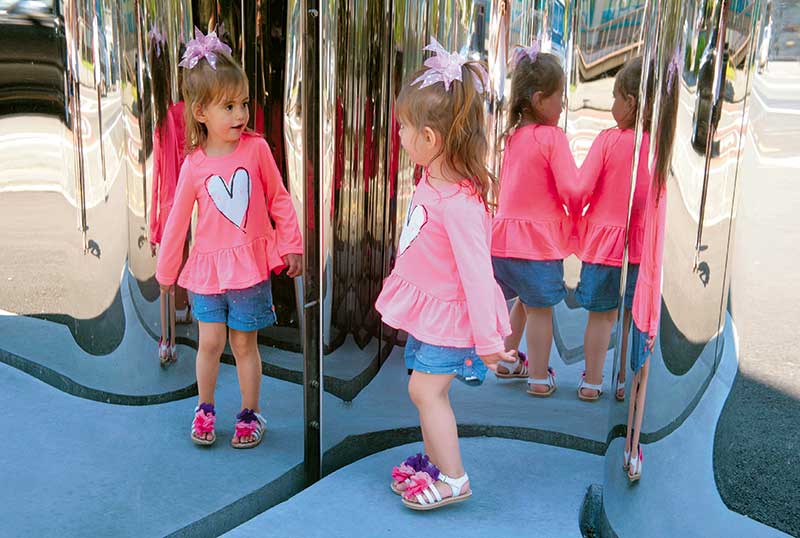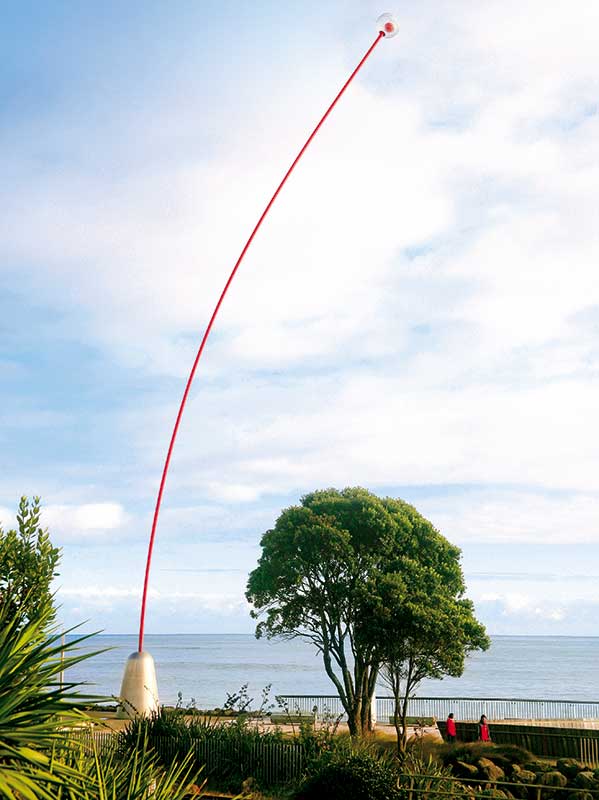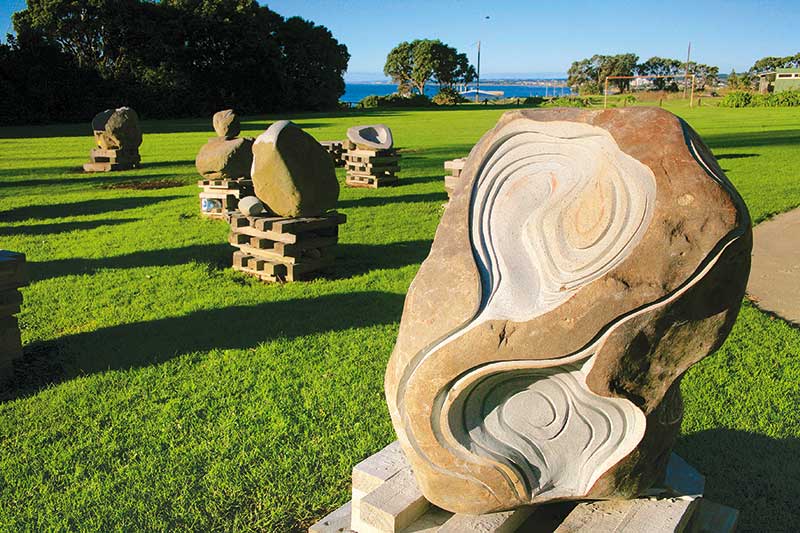Stainless steel
Standing outside the Govett Brewster Art Gallery/Len Lye Centre on a sunny day, you can feel the heat radiating off the stainless steel exterior of the architecturally designed façade while your reflection is twisted, bent, and multiplied in a myriad of comical shapes.
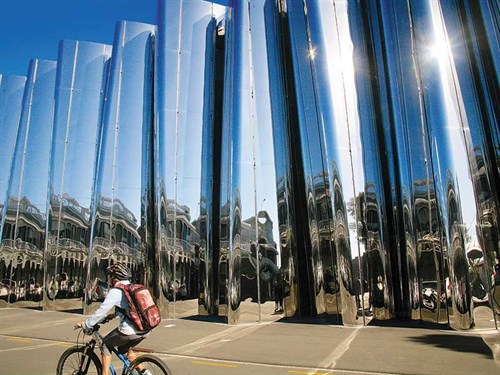
This new addition to the Govett Brewster Art Gallery commands attention. Its cylindrical-like half cones seemingly glued together along the front and left-hand side of the building, reflecting a bright, hard, silvery light onto the road and footpath.
As a photographer, I am constantly fascinated by the way the light reflects off the stainless steel panels enveloping the front of the building.
From the shelter under the veranda of the historic White Hart Hotel across the street, you could photograph the façade every 30 minutes and not get the same image.
Throw in a rainy day, sunrise, sunset, or night streetlights and neon and the opportunities multiply considerably.
I’m hanging out for snow or lightning but it could be a long wait. Inside, the architecture is even more arresting. Huge cavernous spaces seem to dwarf patrons and staff as they wander through. Softly lit by incandescent and natural light, the ‘writing on the wall’ seems to draw you in to linger and ponder over the words and their meaning.
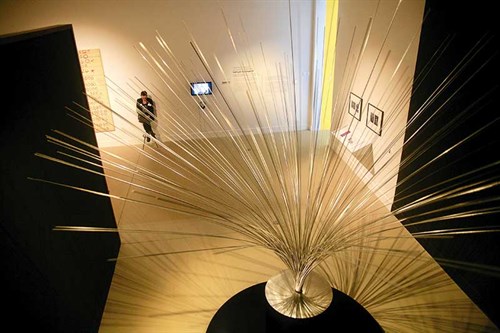
On the opposite side of the building is another cavernous space that leads up to what was once the old Regent cinema, now a series of spaces to display an ever-changing exhibition of art works.
The original upstairs and downstairs layout, connected by a staircase from the original cinema, is clearly evident—a great example of recycling versus demolition.
Completing the centre is a reception area and shop, an upmarket cafe, and a purpose-built cinema. While the Govett Brewster Art Gallery/Len Lye Centre displays installed, completed art works, at the other end of the scale, you can watch art being created before your eyes in theTe Kupenga Biennial International Stone Sculpture Symposium.
Carved stone
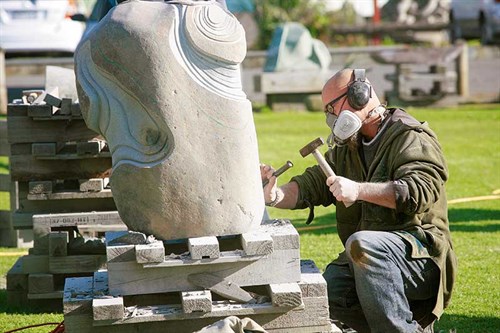
Large andesite boulders are chosen by up to 30 carvers to transform into works of art. International carvers have the first choice followed by national and local artists. Cranes lift boulders onto pallets or skids in readiness for the carving to begin that will continue for the next three weeks.
It’s noisy, dusty, and messy, but watching a beautiful piece of art emerge from a large nondescript boulder is inspirational, if not a little addictive.
I remember visiting the site every two days over the three weeks of carving to see the progress on several of my favourite pieces.
When all the carvers were working, it wasn’t unusual to see the section of the Coastal Walkway under a cloud of dust from the Wind Wand northward to the railway underpass.
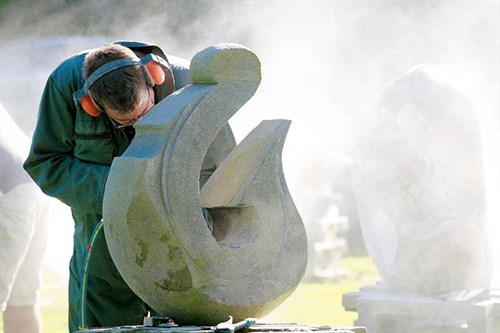
At the end of the symposium, completed stone carvings are auctioned on-site, some examples fetching thousands of dollars.
This year, the symposium runs from 30 December 2017 to 19 January 2018 with the public auction on 27 January 2018.
The Coastal Walkway
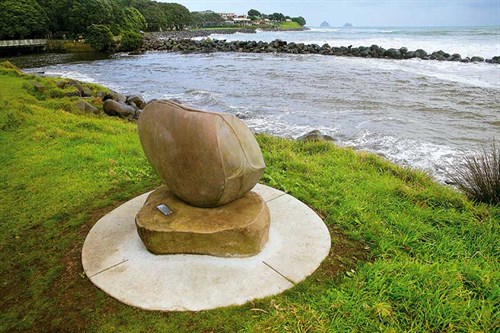
Examples of stainless steel, steel, fibreglass, and carved stone artwork can be found all along the 12km stretch of the Coastal Walkway.
The Wind Wand sculpture and the Te Rewa Rewa Bridge are well-known public art installations, including the new group of mini Wind Wands at the East End Reserve.
All three artworks now define the walkway and have become icons in their own right.
A recent addition to the walkway is the new stainless steel sculpture, Light on the Land, where distorted images and reflections of passers-by can be viewed from the seat opposite.
The sculpture is a magnet for children who either laugh at the distortions or climb all over it, using it as a makeshift slide.
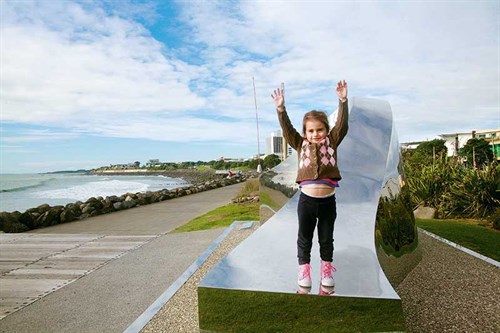
One notable stone carving sits beside the bridge spanning the Huatoki stream within a grove of small shrubs.
Another is at the East End Reserve, close to the mini wind wavers.My favourite sculpture is at the southern start of the walkway near the port and always captures my attention as I walk by.
A round shiny black WW2 German sea mine is mounted on a stainless steel collar with the words Reflect/Collateral/Damage etched into the base.
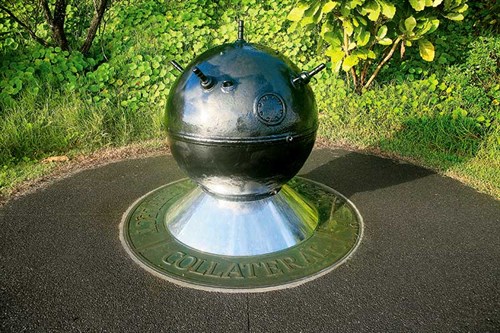
On the landing of the Puke Ariki Museum, in front of the main entrance and at the bottom of the ramp leading onto the street, are two large stone sculptures that have weathered so much, they look like they have been there for decades.
The front façade of Puke Ariki itself is sheathed in stainless steel in a basket weave pattern reminiscent of a Maori flax basket or kete.
Even the stone wall that protects the walkway from the pounding waves of the Tasman Sea occasionally take on temporary art installations in the form of stacked rocks that appear mysteriously overnight from time to time.
At any time of the day, the walkway is busy with walkers, runners, cyclists, skaters, skateboarders, and scooters.
In summer, it’s even busier but that’s what makes it unique. It’s a community asset made all the better with permanent and durable art installations.
Stainless steel and carved stone on a rocky foreshore seem to be the preferred choice of public art that now defines the city as much as the mountain and the rhododendron.

